Mintel forecasts continued moderate growth as inflation eases in coming years, with a rise of 24% between 2022 and 2027 to $44.4 billion.
This article explores how the humanisation trend is underpinning health and nutrition, as well as sustainability, within the pet food industry in North America.
* Source: based on IRI InfoScan® Reviews; US Census Bureau, Economic Census/Mintel, 2022
The pet parent phenomenon is accelerating
Young people are shying away from or at least delaying having children, citing climate change and financial insecurity as reasons*. Almost a quarter (23%) of US non-parents aged 18-49 say they are very unlikely to have children**.
Many younger consumers are favouring pets in lieu of children. As such, the pandemic has placed health at the forefront of consumers’ minds, and more pet owners are focusing on their pets’ health. Indeed, 88% of US pet owners agree it is important to take preventative measures to protect a pet’s health***.
There will be increased consumer demand for food and drink that supports pet health, which comes with a commercial benefit: 79% of US pet food buyers agree it is worth paying more for healthier pet food†.
* Source: Eco-reproductive concerns in the age of climate change, Climatic Change, 2020
** Source: Growing share of childless adults in U.S. don’t expect to ever have children, Pew Research Center, 2021
*** Source: Kantar Profiles/Mintel, April 2020 (base: 1,452 internet users aged 18+ who are pet owners)
† Source: Kantar Profiles/Mintel, June 2022 (base: 1,463 internet users aged 18+ who purchase pet food/treats
Support digestive health through natural sources
Almost half (46%) of US pet food buyers are interested in pet food that supports digestive health*. Globally, 21% of pet food launches features a digestive claim, while just 7% feature a prebiotic claim and 3% a probiotic claim**.
Prebiotics have the potential to support pet digestion, to develop a healthy gut microbiota and potentially improve mineral absorption. Plant sources of prebiotics (eg kelp, yucca, dandelion, beetroot pulp, and inulin from agave and chicory root) are used as a natural source of prebiotics. Insects can be positioned as a natural prebiotic, too, as well as a sustainable and hypoallergenic protein. There are fewer sensory and psychological barriers for consumption of insects in pet food compared to human food.
Postbiotics are also making waves, despite their inclusion in pet food launches being limited to date. Postbiotics are inactivated microbes and their beneficial by-products. Potential benefits of postbiotics include improved gut health, reduced inflammation and immune system support.
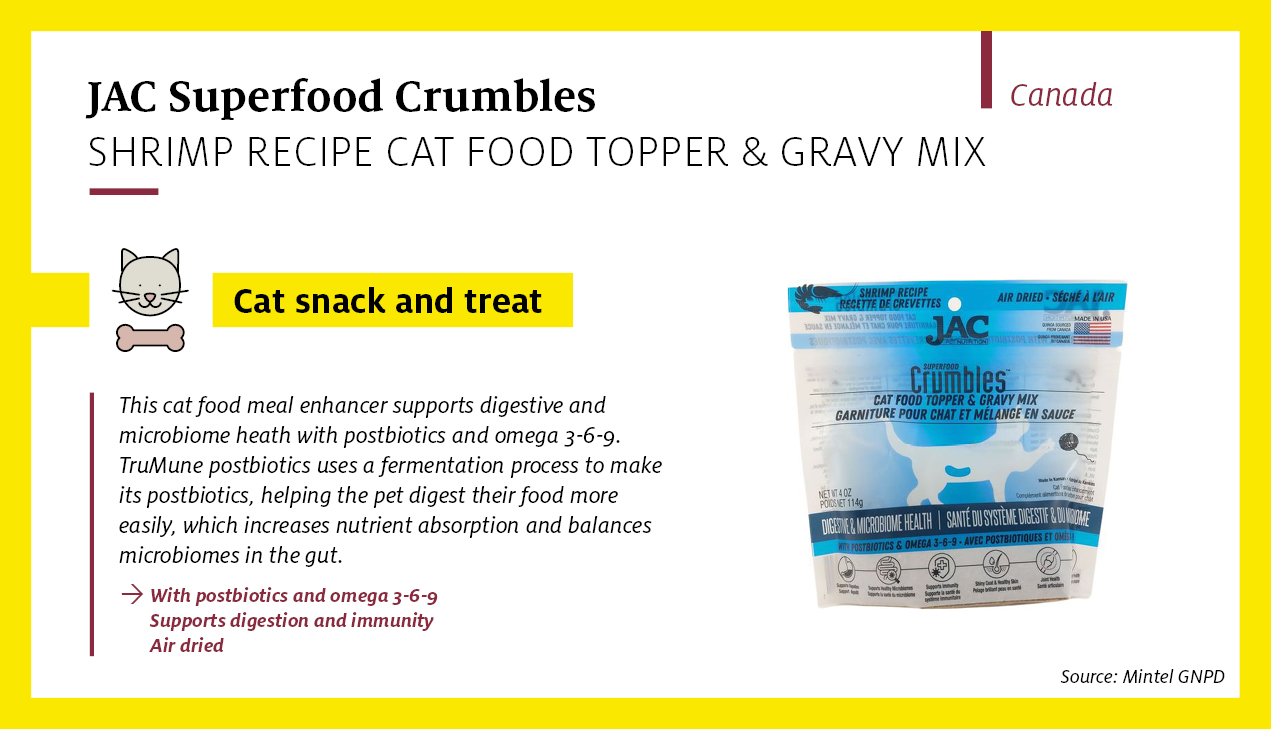
* Source: Kantar Profiles/Mintel, June 2022 (base: 1,463 internet users aged 18+ who purchase pet food/treats
** Source: Mintel GNPD, September 2022-August 2023
Toppers offer supplementary nutrition
Pet owners are cognisant of nutrition even when selecting treats; 69% of US pet food buyers are interested in treats or toppers that promise functional health benefits*.
Initially used to make pet food more palatable, these food enhancers are increasingly used to add health benefits. Topper purchase in the US has risen steadily over recent years. In the US, 25% of dog owners and 28% of cat owners bought toppers for their pets in 2023**, a sizeable increase of 13% and 14%, respectively, from 2019**.
A focus on dialling up health benefits of treats and toppers will serve the industry well. The US pet treat segment, which includes meal enhancers and toppers has already notched up a 56% gain between 2017 and 2022 and accounts for a disproportionate share of category growth***.
* Source: Taken from Mintel’s forthcoming Pet Food – US – 2023 report
** Source: Kantar Profiles/Mintel, April 2019 (base: 1,254 internet users aged 18+ who own a dog and who purchase pet food/treats)
*** Source: based on IRI InfoScan® Reviews; US Census Bureau, Economic Census/Mintel, 2022
Focus on fresh and homemade to appeal to younger demographics
The perception that natural food and drink products are healthy for humans has translated to pet food. US pet owners consequently are turning to ‘fresh’ pet food launches, whether frozen, chilled or homemade.
Younger consumers show particular interest. 44% of US pet food buyers are interested in refrigerated pet food, rising to 51% of 18-44s*. The increase in pet ownership among younger consumers in recent years makes this demographic a pivotal target.
While much of the fresh pet food market falls outside of measured retail channels, industry estimates put total US sales in the region of $1.5 billion, roughly 4% of overall market value**.
Younger consumers are also more open than older consumers to making pet food from scratch. A third (32%) of US dog owners sometimes make food or treats for their dogs, rising to 36% of 18-44s. Similarly, 23% of US cat owners sometimes make food or treats for their dogs, rising to 32% of 18-44s***.
Health is a driver; in the US, 51% of pet food buyers perceive freshly prepared food to be healthier than store-bought food†. However, companies should advise pet owners on how to cook homemade food safely.
* Source: Taken from Mintel’s forthcoming Pet Food – US – 2023 report
** Source: Mintel’s A fresh look at fresh pet food, 2023
*** Source: Taken from Mintel’s forthcoming Pet Food – US – 2023 report
† Source: Kantar Profiles/Mintel, April 2020 (base: 1,439 internet users aged 18+ who purchase pet food/treats)
Consider emerging areas of pet food sustainability
North American pet food launches have seen a rise in ethical and environmental claims over the last five years, from 24% of total launches to 31%*. Claims pertaining to environmentally friendly packaging and recycling are particularly established at 14% and 12% of total launches, respectively*.
However, some types of ethical and environmental pet food are still emerging, like those that are carbon neutral or seek to use less water.
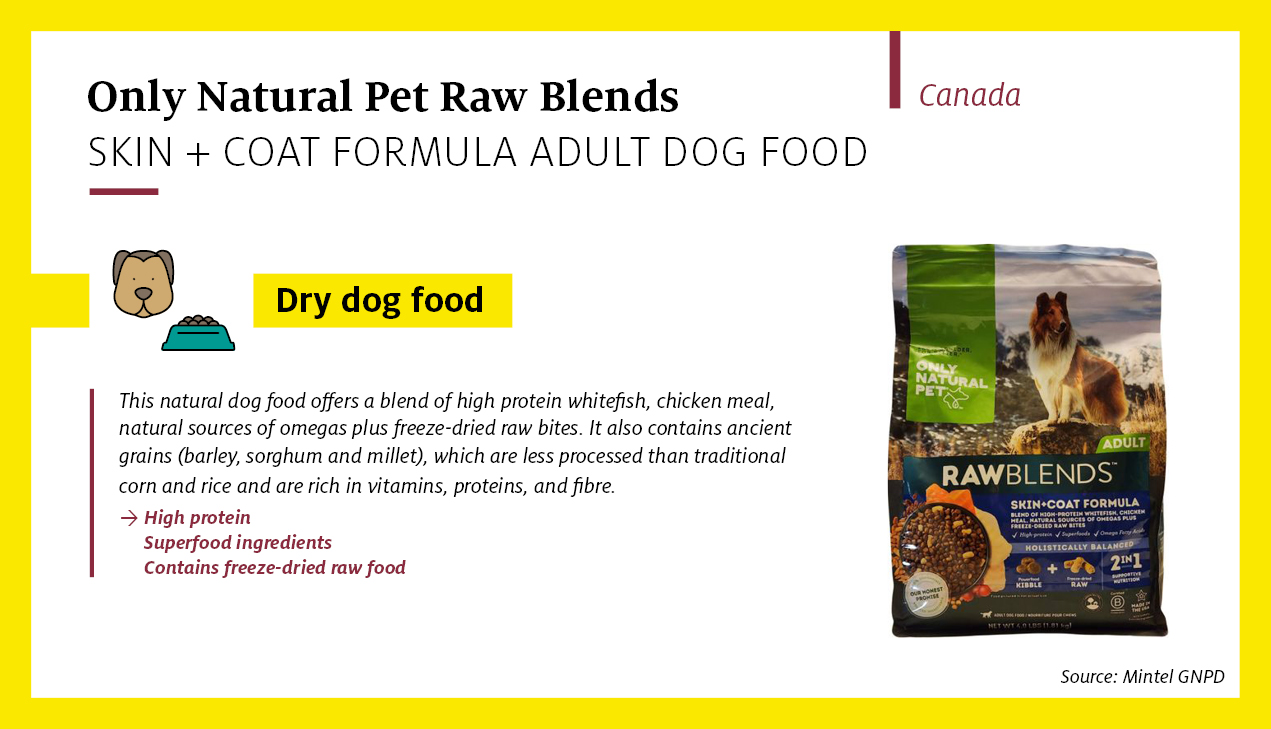
Food production will be affected by water stresses connected with climate change – a growing concern among consumers and brands. In Canada, 39% of consumers are concerned about water usage**. As consumers make links between the sustainability of human and pet food, they will become concerned about pet food’s water usage.
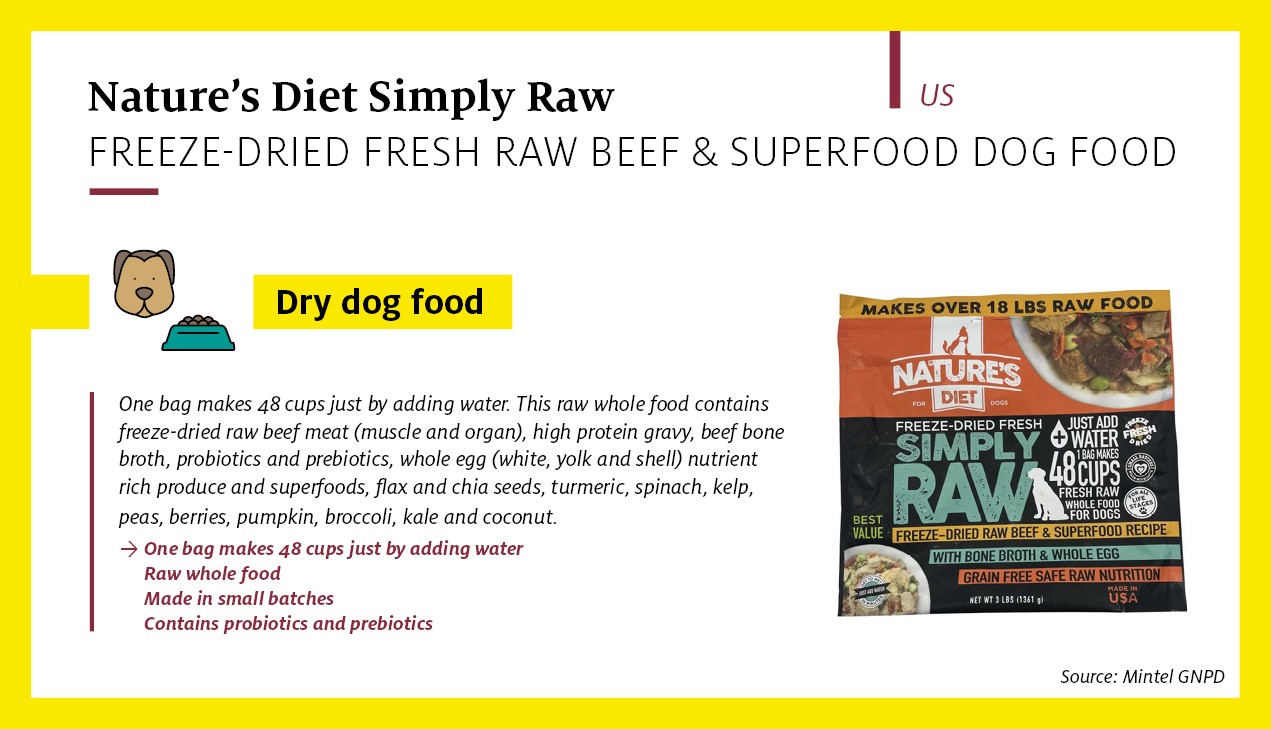
* Source: Mintel GNPD, September 2018-August 2023
** Source: Kantar Profiles/Mintel, November 2021 (base: 2,000 internet users aged 18+)
Take-home points

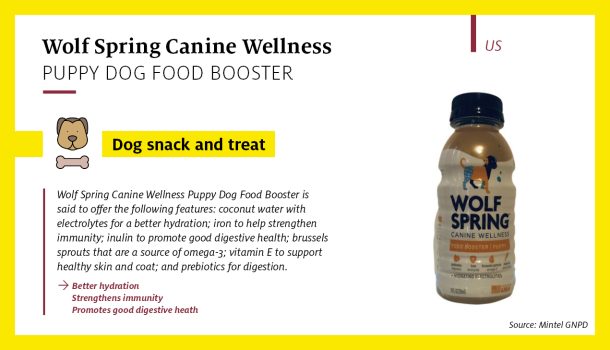
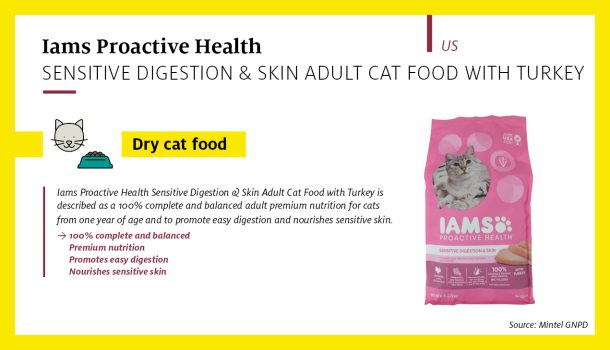
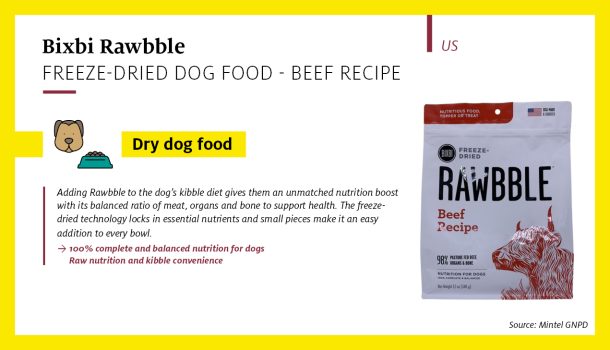
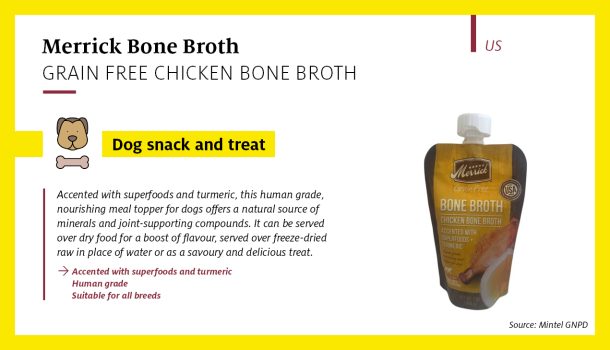
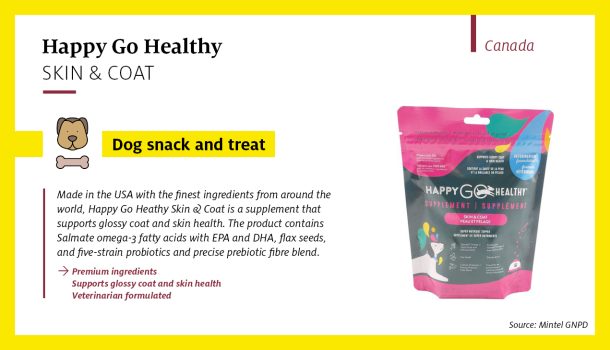
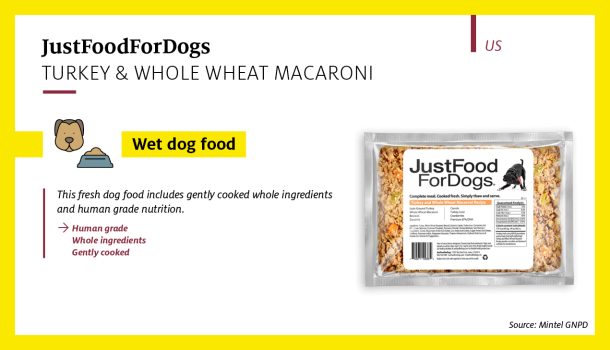
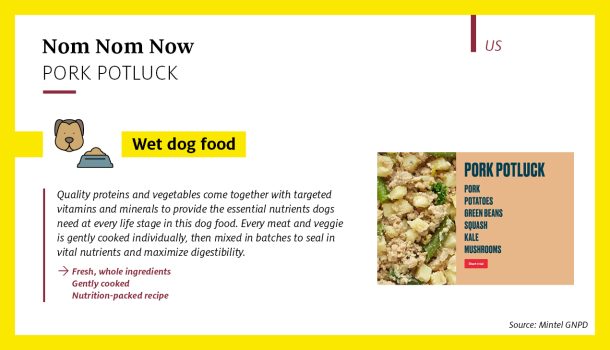
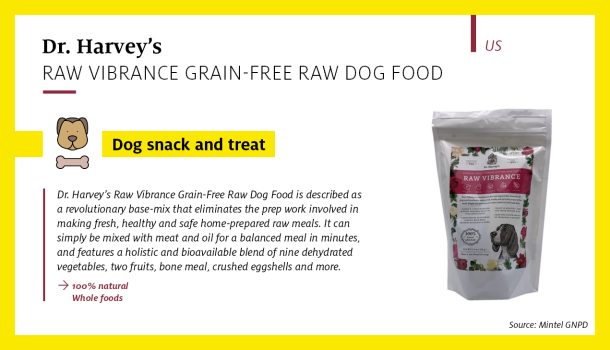
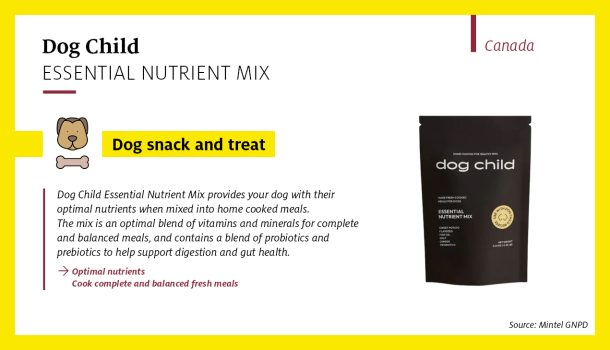




* required fields